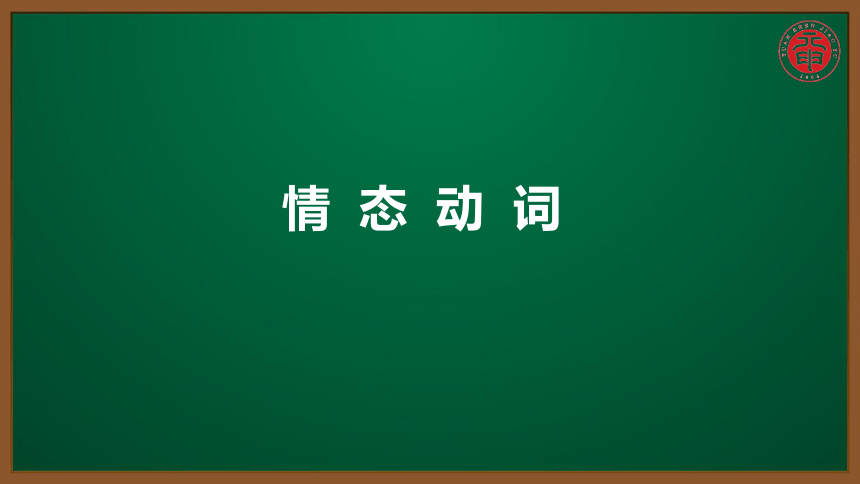
情 态 动 词 一、激趣导入 同学们,请观察图片,猜一猜图片的内容,并用英语表达出来 It can’t be rainy now. The boy can skate on the ice。 The boy can’t catch the buterfly. 二、考点剖析 1、命题思路 情态动词本身虽有一定的意义,但它必须和实义动词一起构成谓语动词,表示说话人的语气和情态,情态动词后接动词原形。初中英语中需要掌握can, could, may, must , need, shall, should, will, would, have to等常用情态动词的用法。 例1.情态动词的形式变化 (1)情态动词没有人称和数的变化,第三人称单数的现在时也无变化。如: I can , she can, we can, he must (2)有些情态动词有过去式,有少数过去式和它的原形相同。 ——— would ——— could ——— might ——— should ——— had to will can may shall have to 有过去式的情态动词有: 过去式不变的情态动词有: ——— must ——— ought to ——— need must ought to need dare ——— dare (3)情态动词的否定式 shall not ——— shan't will not ——— won't can not ——— can't must not ——— mustn't should not ——— shouldn't would not ——— wouldn't could not ——— couldn't need not ——— needn't 例2. 常见情态动词的主要意义和用法。 (1). can / could 表示能力(等于be able to)或客观可能性;还可以表示请求或允许;用在否定句、疑问句或感叹句中还可以表示惊异、怀疑、不相信的态度。Can / Could I ...? 表示请求对方许可(用could比用can语气更加委婉和客气,但答语必须用can);Can / Could you ...? 用来表示说话人征求对方意见(用could比用can语气更加委婉和客气)。 (2). May:表示许可或允许,意为“可以”。May I ...? 表示征求对方许可,否定回答一般用mustn’t或can’t。 (3). Must:意为“必须、应当”,表示义务、命令或必要;在回答must引出的问句时,肯定回答用must,否定回答用needn’t 或don’t have to,表示“没有必要”。 (4). Need:作情态动词时,多用于否定句或疑问句中,表示“需要”或“必要”(need用于肯定句时,常作实义动词,有人称和数的变化)。 (5). Shall:表示说话人征求对方的意见或向对方请示。 (6). Should:意为“应该”,表示义务、责任,可用于各种句式。 (7). Will:用于疑问句中,表示说话人向对方提出请求或建议;还可以用来表示做某事的意志、意愿、决心或打算。 (9). have to:意为“不得不”,强调客观需要,能用于多种时态;而must强调说话者的主观看法,没有时态变化。 (8). would:表示过去的习惯性动作,有“总是、常常”的意思;还可表意愿、拒绝、请求 等。 ?练习一:请选出正确的答案. 2、练一练 B A 1. —Would you like to go fishing with me this afternoon? —I’d love to, but I’m afraid I_____ . I have too much work to do. A. can’ t B. mustn’t C. needn’t D. may not 2. —What a nice day! _____we go hiking? —Good idea. A. Shall B. Must C. Need D. Will 3. We_____ keep the new traffic law and learn how to protect ourse lves. A. may B. should C. can D. could A D 4. —Must I come at four? —Oh, no, you _____. A. don’t B. mustn’t C. don’t have to D. can’t 5. _____ you get me some paper, please? A. Shall B. May C. Need D. Will 6. —May I put my bike here? —No, you _____. You _____put it over there. A. may not; may B. needn’t; must C. mustn’t; should D. won’t; should C C shouldn’t do 1. May I smoke here? (作否定回答) _____, _____ _____ . 2. You should do the di ... ...
~~ 您好,已阅读到文档的结尾了 ~~